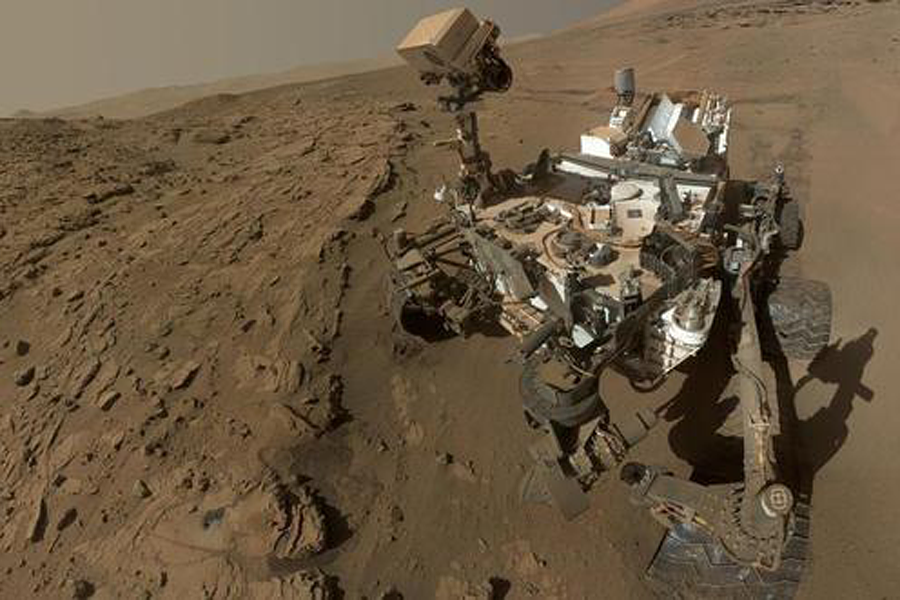Mars methane discovery: What does it mean?
Loading...
Sen—Scientists with NASA"s Mars rover Curiosity team delivered a double whammy of paradigm-shifting news on Tuesday with results of sister investigations showing that the planet most like Earth in the Solar System has organic compounds in its rocks and spikes of methane gas in its atmosphere.
Curiosity fulfilled the primary goal of its mission shortly after touching down inside Gale Crater, a 96-mile wide impact basin with a three-mile high mountain rising from the basin floor. The rover found that Mars was suitable for microbial life, with hydrogen, carbon, oxygen, nitrogen, sulphur and phosphorus in its rocks and low-acid water to stoke the chemical stew.
Last week, the team announced that Gale Crater was once Gale Lake, with a body of water that may have ebbed and flowed for millions or even tens of millions of years.
Now 2.5 years into the mission, scientists report one of their biggest surprises: a short-lived, 10-fold spike in the concentration of atmospheric methane around Gale Crater.
The discovery reopened what many had considered a closed chapter in the tantalizing but elusive findings of methane on Mars, a gas that on Earth is strongly tied to life. Ground-based telescopes and Mars orbiters have had several sightings of methane plumes in Mars" atmosphere dating back more than a decade, but the first eight months of air-sampling by Curiosity yielded nothing.
India"s ongoing Mars Orbiter Mission will attempt to map Mars" methane globally.
Curiosity will continue to monitor for methane spikes in Gale Crater, though scientists doubt concentrations will be rich enough for isotopic analysis that may shed light on whether the gas is biologically or geochemically produced.
The team stands a better chance of learning more about Mars" organic compounds, which were found in samples drilled out from an ancient mudstone called Cumberland before Curiosity began its year-long trek to the base of Mount Sharp.
The organics could have been delivered to Mars by meteorites or formed indigeneously, scientists said during a webcast press conference Tuesday at the American Geophysical Union meeting in San Francisco.
"The challenge now is to find other rocks on Mount Sharp that might have different and more extensive inventories of organic compounds,” lead researcher John Grotzinger, with the California Institute of Technology in Pasadena, said in a statement.
The methane results will be published this week in the journal Science. Publication about the organics detection is pending.
Related Links:
Curiosity finds ancient lake on Mars
Original story from Sen. © 2014 Sen TV Limited. All rights reserved. This material may not be published, broadcast, rewritten or redistributed. For more space news visit Sen.com and follow @sen on Twitter.







